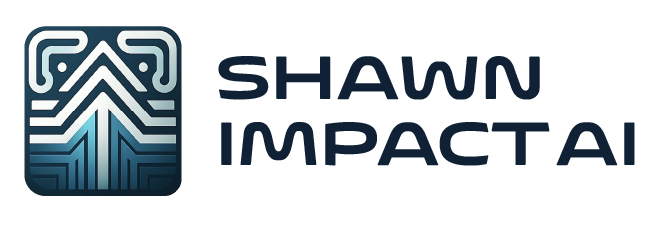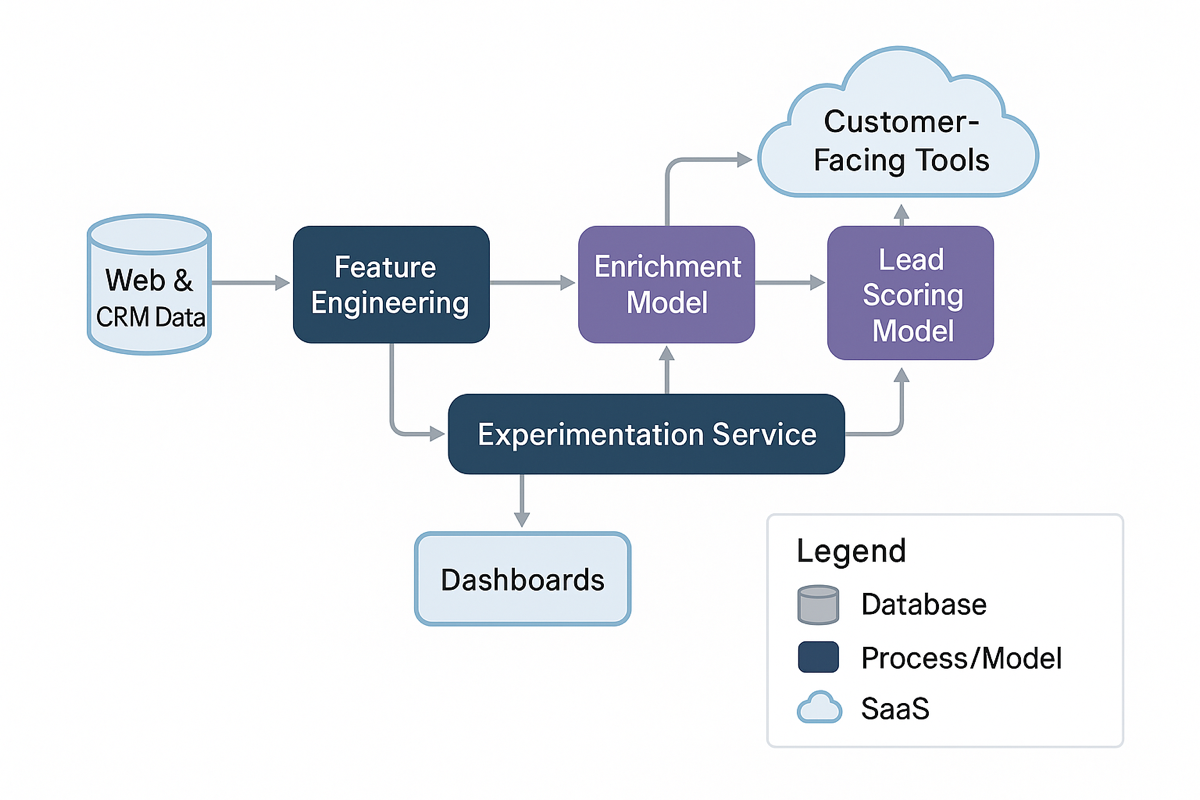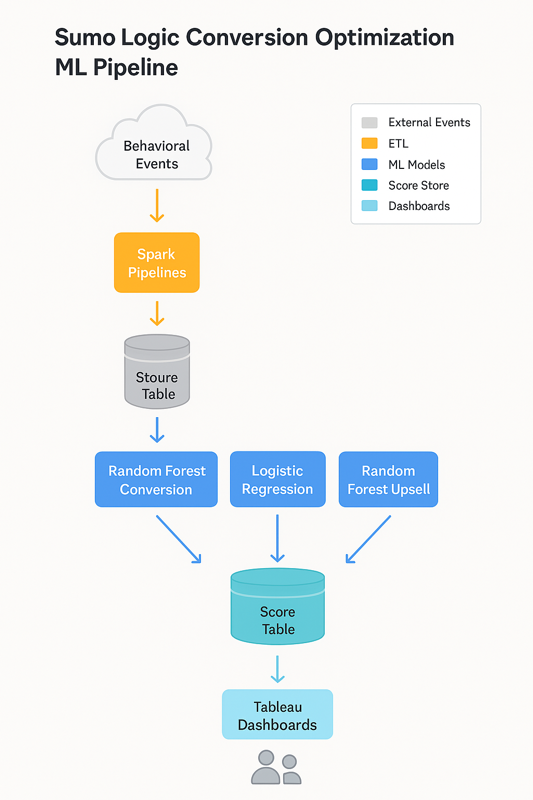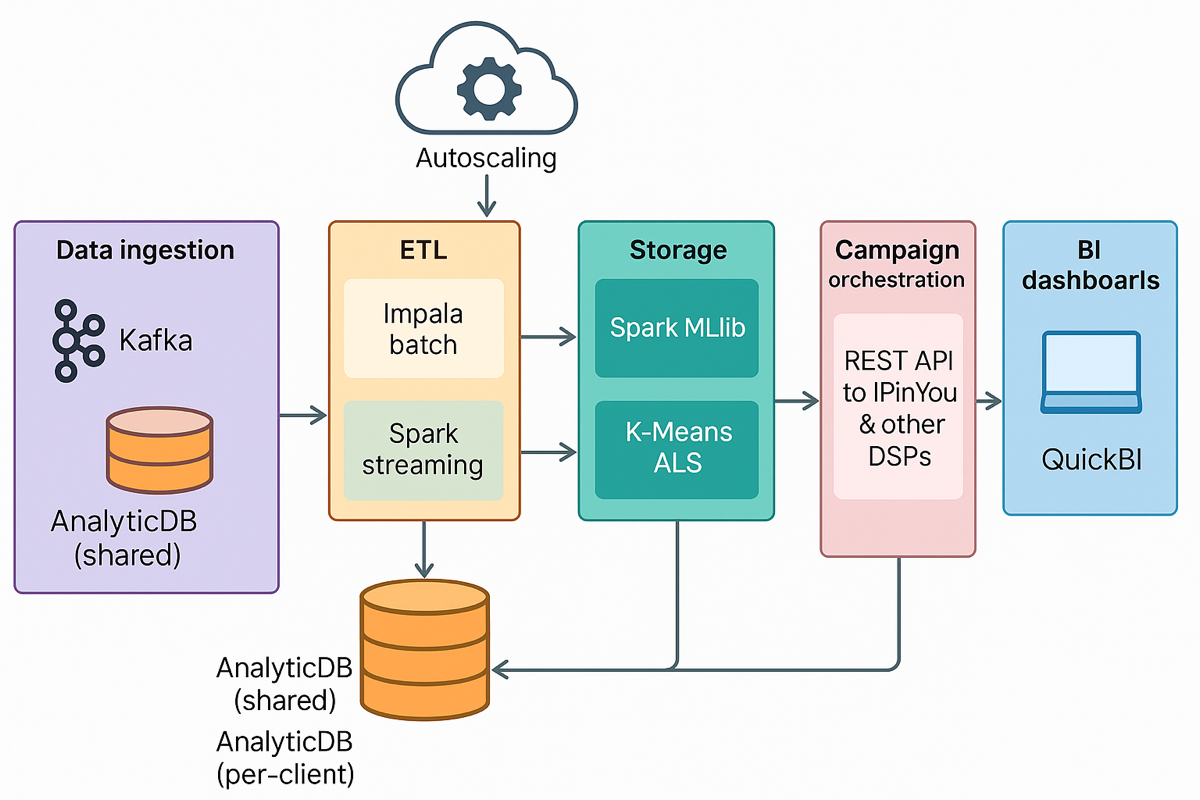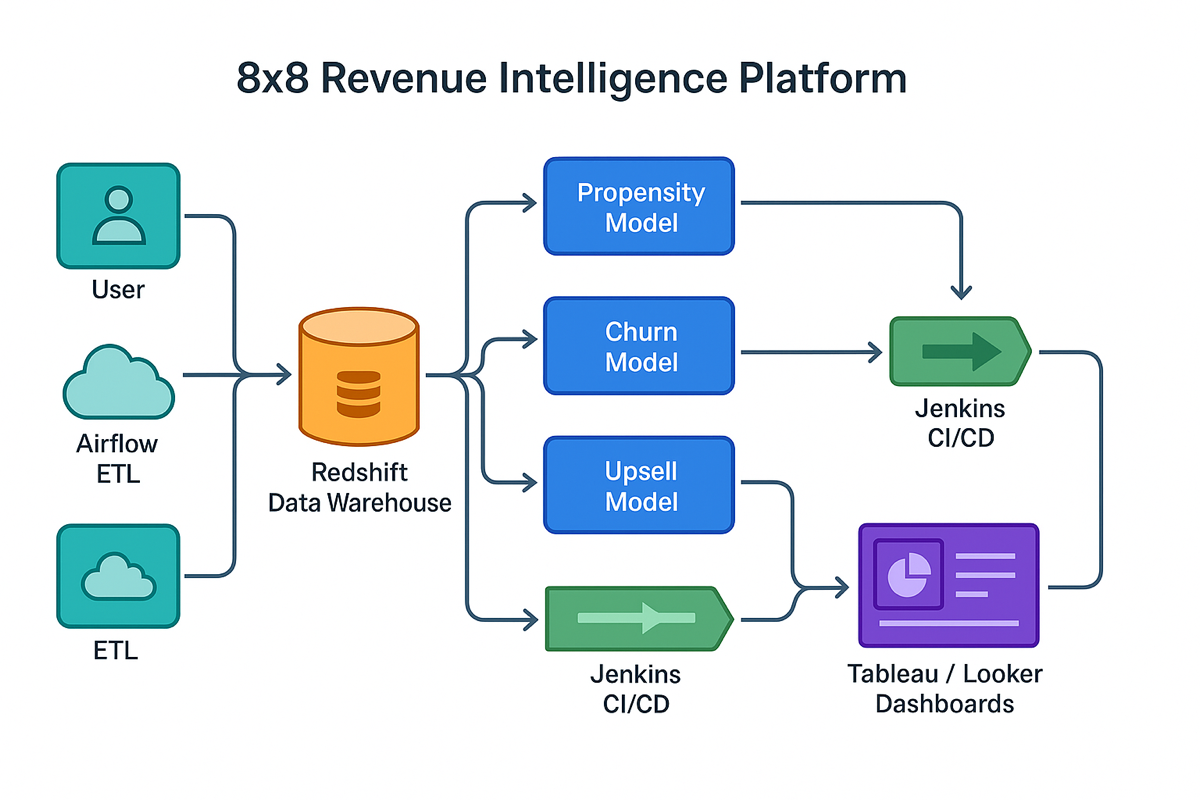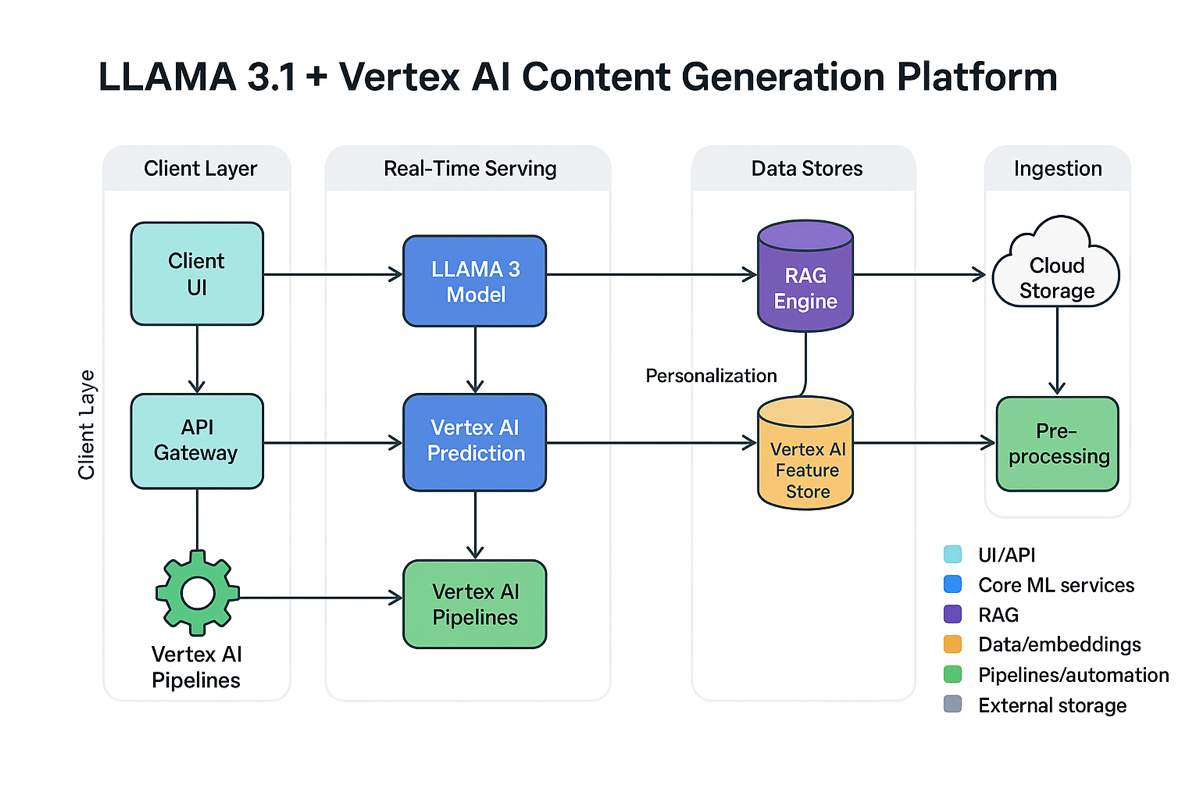
Executive Summary (TL;DR)
1. Strategic Context & Market Friction
Customer-engagement tools were drowning in unstructured chat. Support teams faced response-time penalties, while sales missed signals buried in short, ambiguous messages. Intercom’s leadership saw an opportunity to embed advanced Natural Language Processing (NLP) to unlock both service excellence and revenue growth.
2. Objectives & Delivery Constraints
- Mandate: Ship an AI layer that could classify, route and score chats in <500 ms.
- Constraints: Three-month window for a triage MVP; limited data-science headcount; must integrate with existing Redshift-centric warehouse and Intercom UI without downtime.
3. Technical Architecture & Infrastructure Decisions
| Layer | Decision | Rationale |
| Ingestion | Fivetran extracts Redshift chat logs to Google Cloud Storage | Managed ELT; zero-maintenance |
| Processing | Google Cloud Dataflow pipelines | Horizontal scaling for millions of records |
| Modeling | BERT fine-tuned in TensorFlow | Superior context handling for short text |
| Serving | Vertex AI Prediction | Auto-scaled, low-latency endpoints |
| Feedback | Continuous logging → BigQuery → re-train cycle | Keeps models aligned with evolving language |
Security, PII redaction and SOC 2 alignment were enforced at each hop; Terraform codified infra for reproducibility.
4. Implementation & System Workflows
- Pre-processing: tokenisation, stop-word removal, sentiment scoring.
- Dual-model inference:
- Triage Model → six intent buckets (product / pricing / subscription, question vs issue).
- Lead Model → probability of purchase intent.
- Triage Model → six intent buckets (product / pricing / subscription, question vs issue).
- Routing Engine: rule set to self-help pages, chatbots or human agents.
- CRM Bridge: high-scoring leads auto-push to Salesforce via webhooks.
- Retraining Trigger: weekly drift-detection job queues new data into Vertex AI Pipelines.
5. User Experience & Product Storytelling
Support reps see a “smart inbox” with colour-coded intents; sales sees a real-time lead board ranked by AI score. Non-technical staff configure thresholds through a no-code settings panel.
6. Performance Outcomes & Measurable Impact
| Metric | Pre-AI | Post-AI | Δ |
| Avg. first-response time | 2.5 min | 45 sec | -70 % |
| CSAT | 78 % | 94 % | +20 % |
| Leads surfaced / month | 0 (manual) | 200 k+ | — |
| Support overhead | — | -10 % FTE |
Latency at P95 remains <300 ms with 99.9 % uptime.
7. Adoption & Market Strategy
Pilot launched to five enterprise customers, then rolled out to global user base. Stickiness grew via embedded lead-scoring dashboards and custom intent taxonomies, creating a high switching-cost moat.
8. Feedback-Driven Evolution
User feedback highlighted edge-case slang; weekly retraining closed precision gaps. Integration with Intercom’s marketing-automation triggered additional upsell campaigns, driving the +20 % YoY revenue boost.
Business Outcome & Strategic Leverage
The AI layer not only trimmed support costs but opened a data-rich lead channel that elevated Intercom’s valuation narrative as an AI-native platform—setting the stage for future conversational-commerce modules.

